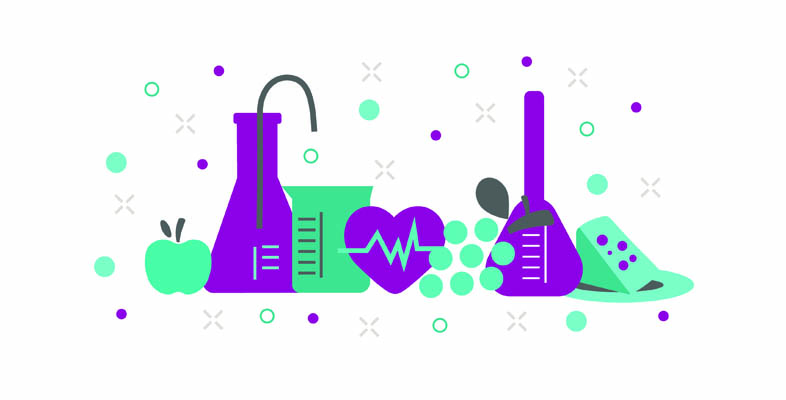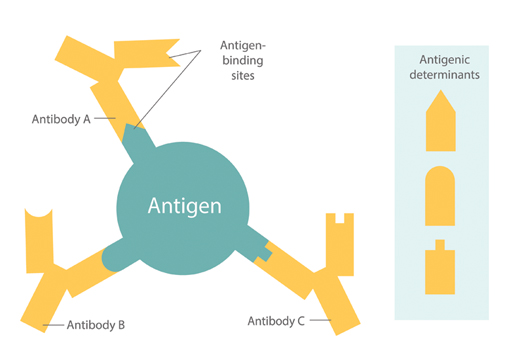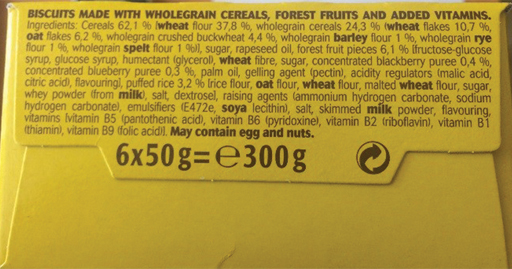4 Allergens
You may or may not find it useful to have the food amounts given per 100 g. However, there is little debate about the importance of highlighting substances in the food which people might be allergic to – the allergens.
Our immune system enables us to fight off invading organisms, mostly bacteria and viruses. These can enter the body through our food, in the air we breathe, via our skin, etc. This is a very complex process but it involves the body producing antibodies, a type of protein, that bind to any molecules the body recognises as not belonging to itself.
These invading molecules are called antigens. They are often present on the outside coat of a bacterium or virus, for example. The attachment of the antibodies to the antigens triggers a cascade of reactions, which should eventually destroy the invading organism. This may take some time, during which, the person may show symptoms of a disease caused by the infecting organism.
Sometimes, the immune system may need some help with antibiotics if it is a bacterial invasion, or antiviral drugs if it is a viral invasion, to help vanquish the invader. Usually, however, the person recovers which primes the immune system. A subsequent attack by the same organism will be much less severe and there may not be any symptoms at all.
Occasionally, something goes wrong with the immune system, and the body reacts to a completely harmless molecule as though it is a dangerous invader. It is not clear why this happens but, when it does, it is called an allergic response. The molecule that triggers it is called an allergen.
Depending on the person and the severity of the allergy, the symptoms of an allergic response can range from itchy skin and swollen lips and mouth, to wheezing, shortness of breath, vomiting and diarrhoea, etc. In some cases, very small amounts of an allergen, such as nuts, can cause a severe reaction called anaphylactic shock. This leads to collapse and unconsciousness, which constitutes a medical emergency and can be fatal.
There is now a list of foods (given below) that are allergenic in some people. European Union (EU) food regulations require that if a food contains any of these allergens, the ‘allergenic ingredients need to be emphasised using a typeset that clearly distinguishes it from the rest of the ingredients, for example by means of the font, style or background colour’ (European Commission, 2018).
Figure 7 shows an example of this on the food packaging of biscuit bars.
The EU regulations list:
- cereals containing gluten, namely wheat (such as spelt and khorasan wheat), rye, barley and oats
- crustaceans, namely prawns, crabs, lobster and crayfish
- eggs
- fish
- peanuts
- soybeans
- milk – including lactose
- nuts – namely almonds, hazelnuts, walnuts, cashews, pecan nuts, Brazil nuts, pistachio nuts and macadamia (or Queensland) nuts
- celery – including celeriac
- mustard
- sesame
- sulfur dioxide or sulfites used as a preservative in dried fruit – when added at a level above 10 mg/kg or 10 mg/L in the finished product
- lupin – including lupin seeds and flour which can be found in types of bread, pastries and pasta
- molluscs – including mussels, whelks, oysters, snails and squid.
In the UK, new allergy advice about food products which are sold loose came into force in December 2014. And now, foods which are sold unpackaged in catering outlets, delicatessens, bakeries, sandwich bars, etc. must also provide allergen information.


